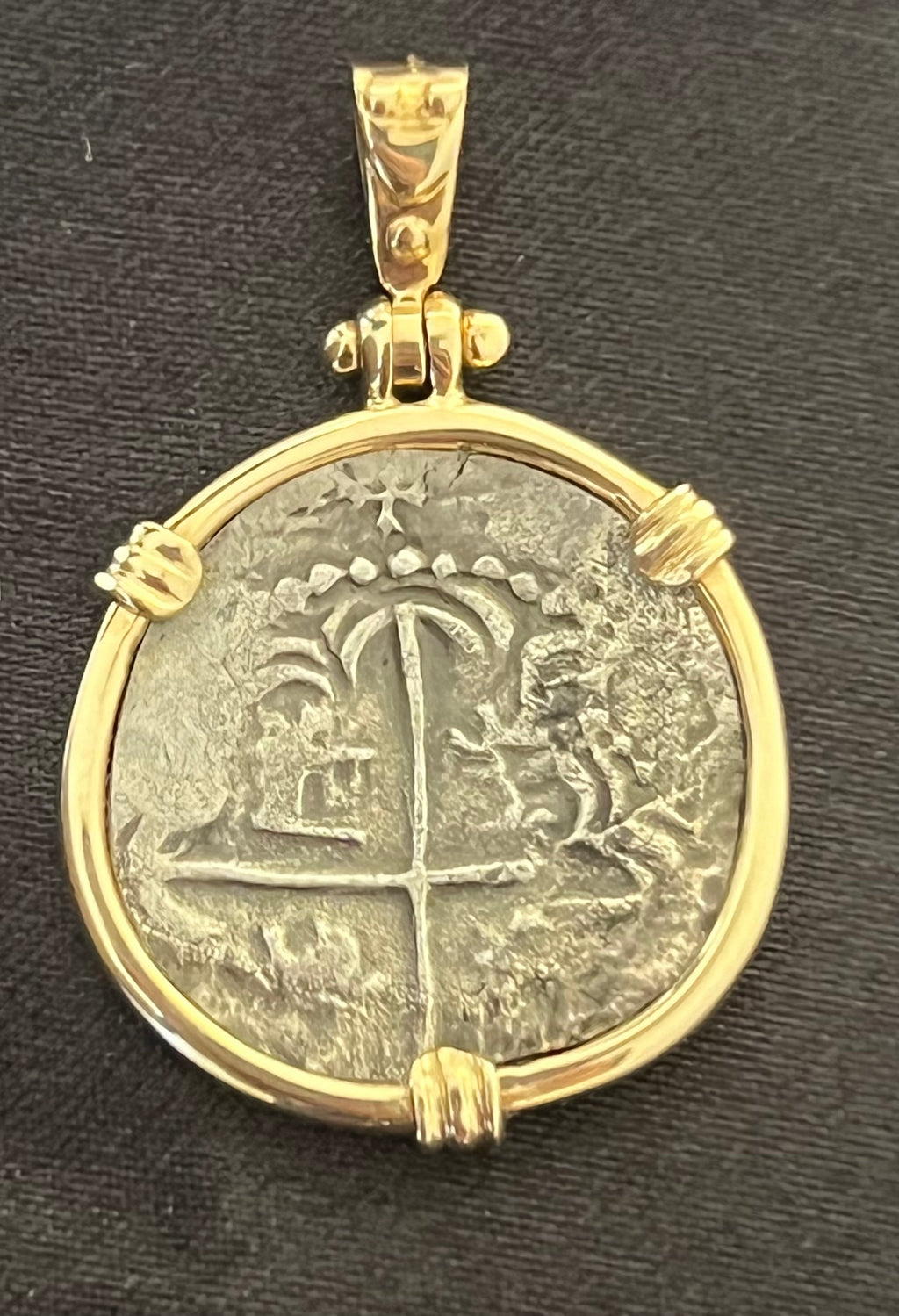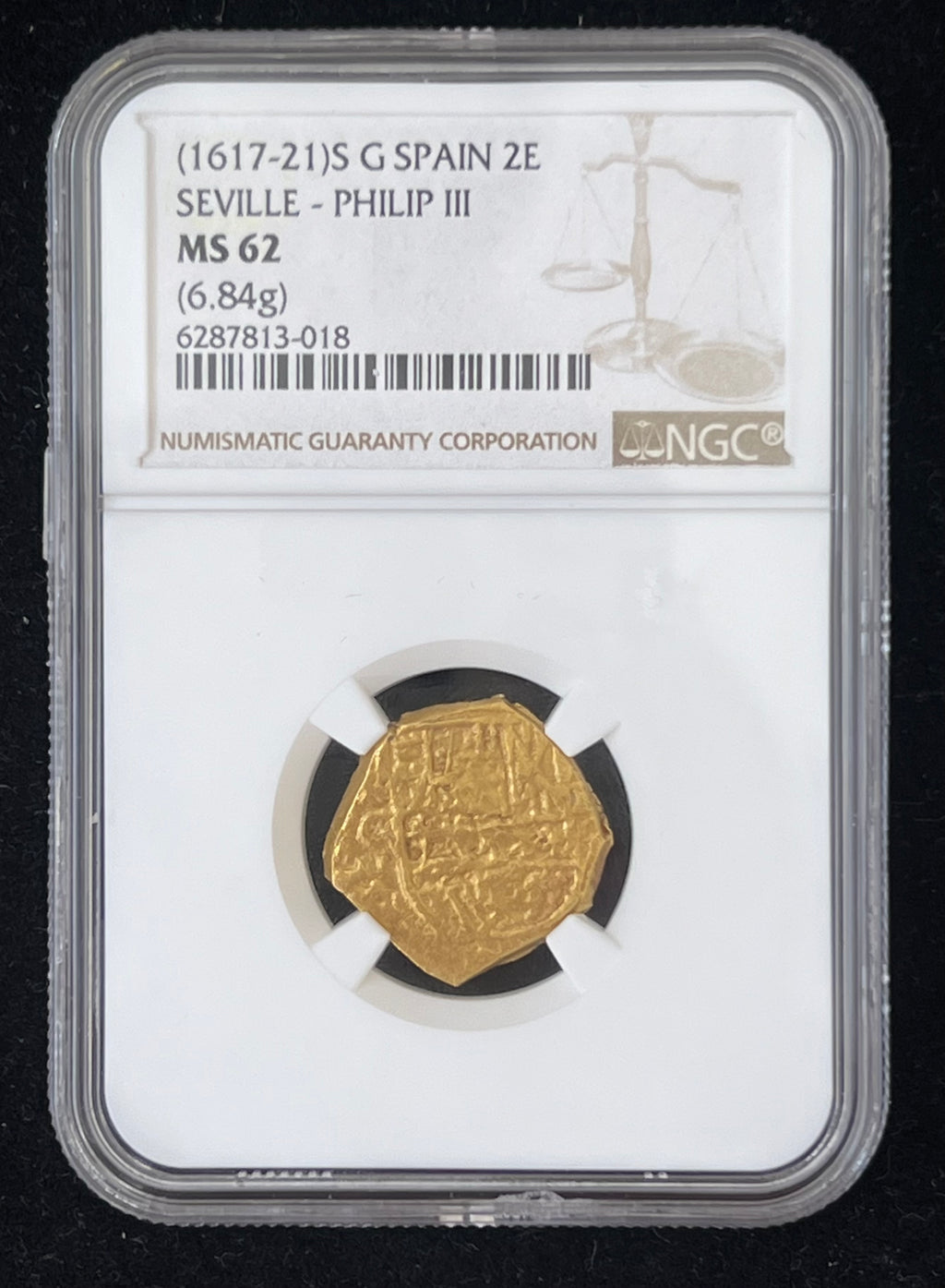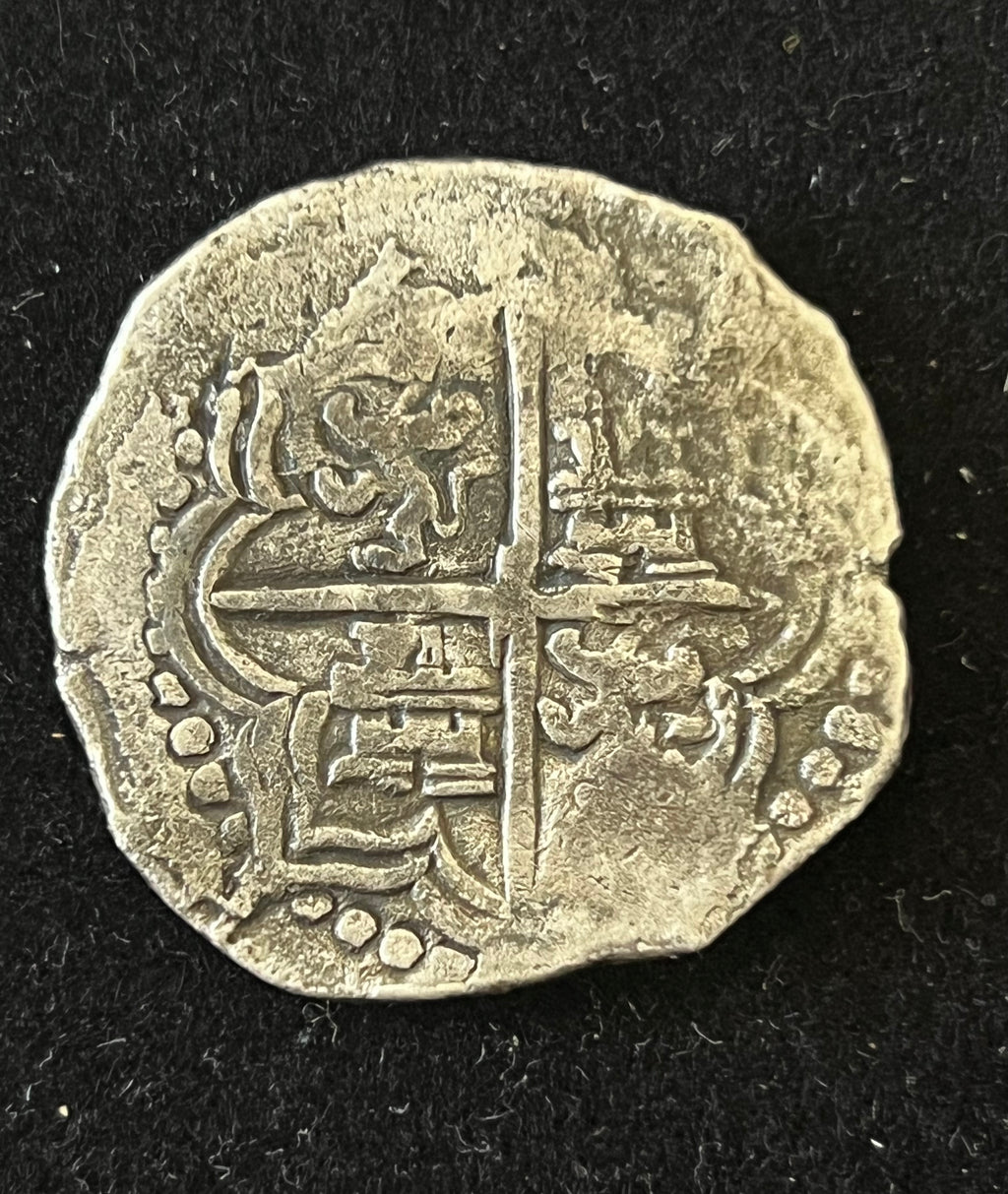Unearthing History: The Remarkable Story Of The Santa Margarita Shipwreck
Imagine a time, way back in the early 1600s, when grand ships sailed across vast oceans. These vessels, truly magnificent, carried incredible riches from distant lands back to Spain. It was a perilous journey, full of unknowns, and sometimes, the sea would claim them. One such ship, a very famous one, was the Santa Margarita, and its story, you know, is one of incredible loss and then, much later, of astonishing discovery. It's a tale that still captures people's imagination today, especially if you think about all the history resting quietly beneath the waves.
The Santa Margarita shipwreck, you see, isn't just about old wood and metal on the ocean floor. It’s about a moment in time, a snapshot of life, and the hopes and dreams of people who lived centuries ago. This ship, a Spanish galleon, was part of a grand fleet, a sort of floating city, that left Havana in 1622. They were heading home, loaded with treasures, but a powerful storm, quite sudden actually, changed everything for so many of them.
For many years, the location of this ship, the Santa Margarita, remained a secret, hidden by the ocean's depths. People looked, of course, but the sea keeps its secrets well. Then, after a very long wait, something truly special happened. A dedicated group of treasure hunters, with a lot of patience and, you know, a deep passion for history, finally brought parts of its story, and its amazing cargo, back into the light. It's a testament to persistence, really, and the enduring allure of hidden historical finds.
- Lost Beagle
- Camila Necklace
- Did Kristen Bell Have Facelift
- Venus In Pisces Male
- Man Killed In A Car Accident
Table of Contents
- The Fateful Voyage of 1622
- A Storm Unleashed
- The Search Begins and Ends
- Mel Fisher and His Dream
- The Discovery of the Santa Margarita
- Treasures from the Deep
- Preserving the Past
- Lessons from the Wreck
- FAQs About the Santa Margarita Shipwreck
The Fateful Voyage of 1622
The year 1622 was, in some respects, a very important time for Spain. They relied heavily on the wealth that came from their colonies in the Americas. Gold, silver, and precious gems were regularly shipped across the Atlantic. The Tierra Firme fleet of 1622 was, you know, one of these vital convoys. It consisted of many ships, all gathered together for safety, and they were truly laden with an incredible amount of valuable goods.
Among these ships were two particularly famous galleons: the Nuestra Señora de Atocha and, of course, the Santa Margarita. Both were heavily armed, as a matter of fact, and carried a tremendous amount of official cargo, along with personal belongings and contraband. They represented a huge portion of Spain's annual income, so their safe passage was, you know, absolutely critical.
The fleet set sail from Havana, Cuba, on September 4, 1622. Their destination was Spain, a journey that would typically take many weeks. The weather, as it happened, was a bit calm at first, giving no real hint of the trouble that was just around the corner. These were big ships, very big for their time, and they needed good weather to make their way across the vast ocean.
- Sun Square Uranus Transit
- Susie Mcentire Illness
- Which Pretty Little Liars Character Are You
- Kassidy Cook College
- How Much Is Regina King Worth
A Storm Unleashed
Just a day after leaving port, a truly fierce hurricane struck the fleet. It was, apparently, one of the most powerful storms to hit the Florida Straits in recorded history. The ships were caught completely off guard, tossed around like toys in the massive waves. The winds were absolutely brutal, and the rain, you know, just poured down relentlessly.
Many ships in the fleet were damaged, some quite badly. The Santa Margarita, along with its sister ship, the Atocha, bore the brunt of the storm's fury. The sea, you see, was just too powerful. The Santa Margarita, sadly, was driven onto a reef near the Florida Keys. It broke apart rather quickly, and sank in about 18 to 35 feet of water, taking most of its crew and passengers with it. It was a truly terrible loss of life and, of course, of immense wealth.
The Atocha, equally unfortunate, also sank nearby, in deeper water. The immediate aftermath was, in some respects, a scene of utter devastation. Survivors from other ships tried to help, but the conditions were incredibly difficult. Salvage efforts began almost immediately, but the storms kept coming, and the shifting sands of the ocean floor, you know, quickly covered the wrecks.
The Search Begins and Ends
Spanish salvors tried for years to recover the treasure from both the Santa Margarita and the Atocha. They used free-diving slaves, actually, to try and reach the sunken ships. It was an incredibly dangerous and difficult task. They managed to recover some items from the Santa Margarita, like a few bronze cannons and some silver bars, but the majority of the cargo remained lost. The conditions were just too challenging, and the technology of the time, you know, wasn't really up to the task.
Over the centuries that followed, the precise locations of both the Santa Margarita and the Atocha became lost to time. They became legendary wrecks, whispered about by sailors and treasure hunters, but no one really knew exactly where they lay. The ocean, as a matter of fact, had completely swallowed them up, leaving only stories and old maps, which, you know, weren't always accurate.
For hundreds of years, the wrecks remained undisturbed, resting on the seabed. The dream of finding them, however, never quite faded. People always wondered what treasures might still be down there, and what stories these lost ships could tell us about the past. It was, you know, a very persistent mystery, just waiting for someone to solve it.
Mel Fisher and His Dream
Enter Mel Fisher, a man with a very big dream. He was, in essence, a modern-day treasure hunter, but with a scientific approach and, you know, an incredible amount of determination. Mel Fisher became obsessed with finding the 1622 fleet, particularly the Atocha and the Santa Margarita. He believed, very strongly, that they were out there, just waiting to be found.
Mel Fisher started his search in the Florida Keys in the 1960s. It was a long, hard effort, full of setbacks and disappointments. He faced legal battles, financial struggles, and, sadly, even personal tragedies. Many people, you know, thought he was crazy for spending so much time and money on what seemed like a hopeless quest. But Mel, he just kept going, absolutely convinced he would find them.
His team, called Treasure Salvors, Inc., developed new techniques for underwater archaeology and recovery. They used prop-wash deflectors, called "mailboxes," to clear sand from the seabed, a pretty clever idea, actually. This allowed them to uncover parts of the ocean floor that had been hidden for centuries. It was a very innovative approach, and, you know, it really changed how people looked for shipwrecks.
The Discovery of the Santa Margarita
After many years of searching for the Atocha, Mel Fisher's team made a significant discovery. While the main focus was on the Atocha, pieces of another shipwreck, a very important one, started to emerge. This was, in fact, the Santa Margarita. The first major finds from the Santa Margarita began in the early 1980s, not long after the Atocha's main hull was located.
The Santa Margarita shipwreck site, you know, was found relatively close to the Atocha. This made sense, as both ships had sunk during the same hurricane. The discovery of the Margarita was, in some respects, almost as exciting as the Atocha, because it confirmed the magnitude of the 1622 disaster and added another incredible chapter to the story. It was, arguably, a very big moment for underwater archaeology.
The process of excavating the Santa Margarita was, you know, a painstaking effort. Divers worked for countless hours, carefully documenting and recovering artifacts. Each piece, no matter how small, told a part of the ship's story and the lives of those on board. It was a slow, deliberate process, but absolutely necessary to preserve the historical context.
Treasures from the Deep
The Santa Margarita shipwreck yielded an absolutely incredible array of treasures. Divers recovered thousands of silver coins, known as "pieces of eight," and many very heavy silver bars. These were, in fact, the primary currency of the Spanish Empire at the time, and finding so many of them was, you know, just astonishing.
Beyond the silver, the wreck also held beautiful gold chains, emeralds from Colombia, and other precious jewels. There were also, you know, personal items belonging to the passengers and crew, like religious artifacts, pottery, and tools. These everyday objects offer a really intimate glimpse into the lives of people from centuries ago.
One of the most remarkable finds from the Santa Margarita was a very rare gold bar, weighing over 75 pounds. It was, apparently, one of the largest gold bars ever recovered from a Spanish galleon. This particular piece, you know, really highlighted the immense wealth that was lost in that fateful storm. You can learn more about the artifacts from the Santa Margarita on the Mel Fisher Maritime Museum's website, which is pretty cool.
Preserving the Past
Recovering artifacts from the Santa Margarita shipwreck is just the first step. The real work, in some respects, begins when they come out of the water. Saltwater can be very damaging to historical objects, so they need immediate and very careful conservation. This process, you know, can take years for some items.
Specialized conservators work to remove salt, stabilize materials, and prevent further decay. Wooden objects, for example, often need to be treated with special solutions to prevent them from falling apart as they dry. Metals, too, require very specific cleaning and preservation techniques. It's a truly delicate art, actually.
Many of the incredible finds from the Santa Margarita, along with those from the Atocha, are now on display at the Mel Fisher Maritime Museum in Key West, Florida. This museum, you know, does a fantastic job of telling the story of these shipwrecks and showcasing the recovered treasures. It's a place where you can really connect with this amazing piece of history. You can learn more about historical discoveries on our site, which is pretty neat.
Lessons from the Wreck
The story of the Santa Margarita shipwreck offers us, you know, many lessons. It reminds us of the power of nature and the inherent risks of sea travel in centuries past. It also shows the incredible human spirit, both in the desperate attempts to salvage immediately after the disaster and in the relentless pursuit of Mel Fisher's team centuries later.
Beyond the treasure, the artifacts from the Santa Margarita provide invaluable insights into 17th-century life, trade, and maritime practices. They help historians piece together a more complete picture of that era, from the everyday items used by ordinary sailors to the grand wealth of the Spanish Empire. It's a very tangible link to the past, actually.
The Santa Margarita shipwreck continues to inspire people, from history enthusiasts to aspiring archaeologists. It highlights the importance of preserving our underwater cultural heritage and the ongoing potential for new discoveries. There's always, you know, more to learn from the deep, and this wreck, in a way, is a constant reminder of that. We also have information about other fascinating historical events that you might find interesting.
FAQs About the Santa Margarita Shipwreck
What was the Santa Margarita shipwreck?
The Santa Margarita was a Spanish galleon, a very large sailing ship, that sank in 1622 during a powerful hurricane off the coast of the Florida Keys. It was part of a fleet carrying immense treasure from the New World back to Spain, so it was, you know, a very important vessel.
Where was the Santa Margarita shipwreck found?
The Santa Margarita shipwreck was found off the coast of the Florida Keys, relatively close to its sister ship, the Nuestra Señora de Atocha. The precise location, you know, is in the waters near Key West, where the 1622 fleet met its unfortunate end.
Who found the treasure from the Santa Margarita?
The treasure from the Santa Margarita shipwreck was primarily found by Mel Fisher and his dedicated team, Treasure Salvors, Inc. They spent many years searching the waters of the Florida Keys, and their persistent efforts, you know, finally paid off in the 1980s.
- Will Smith Life Timeline
- Actress Rachel Wood Crossword
- Celebrity Totes
- Saturn Conjunct Mercury
- Womens History Photos

Santa Margarita – Shipwreck Coins

Santa Margarita – Shipwreck Coins

Santa Margarita – Shipwreck Coins